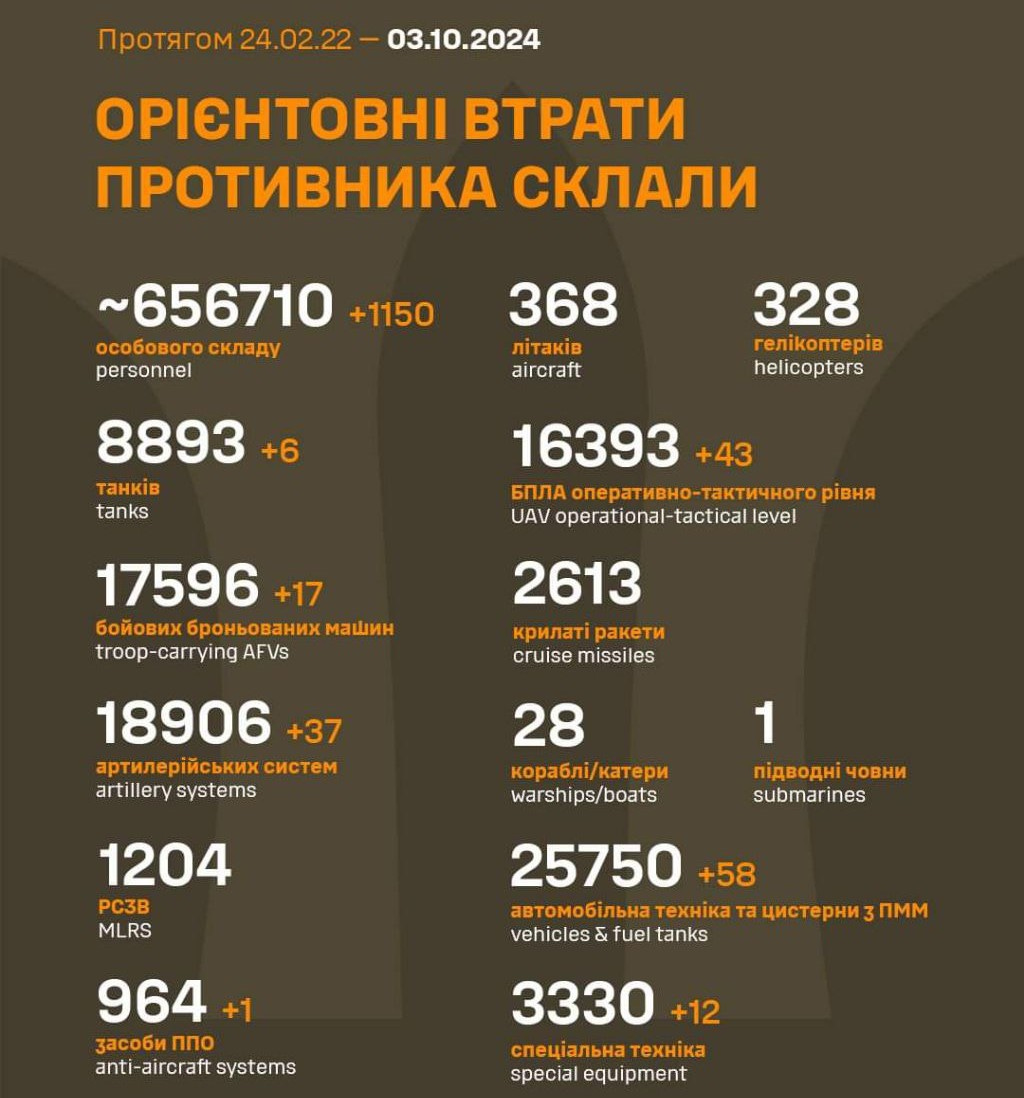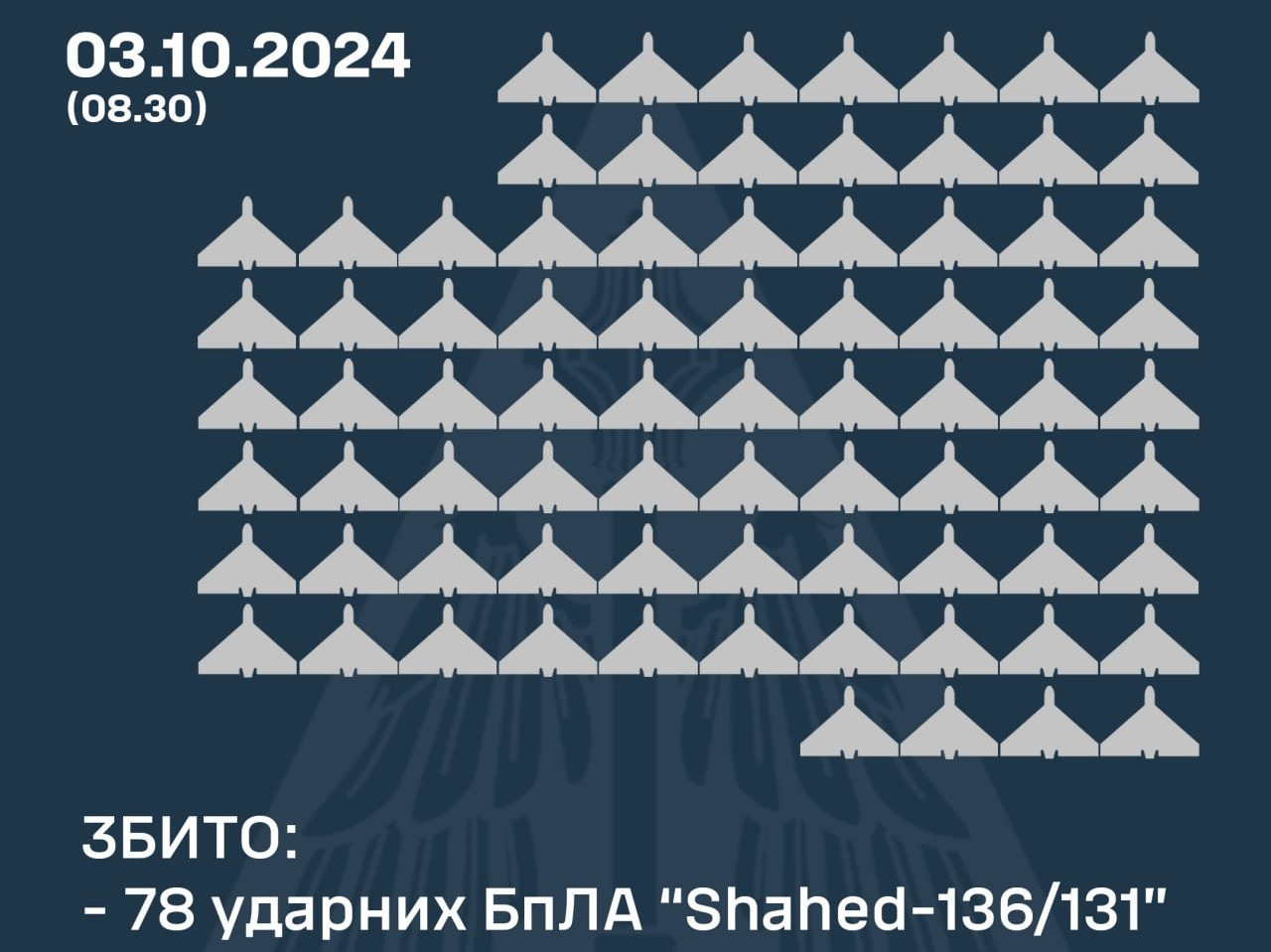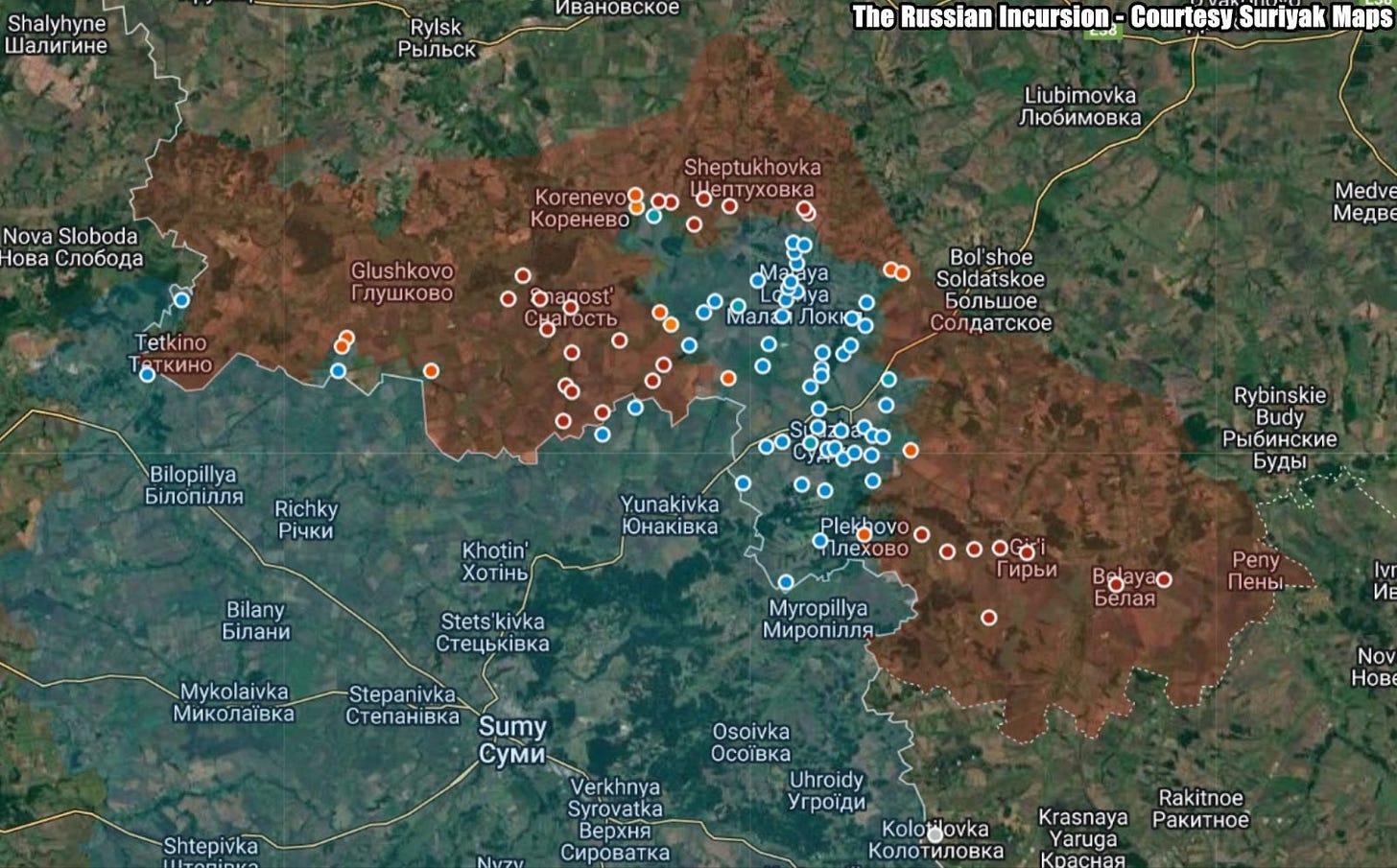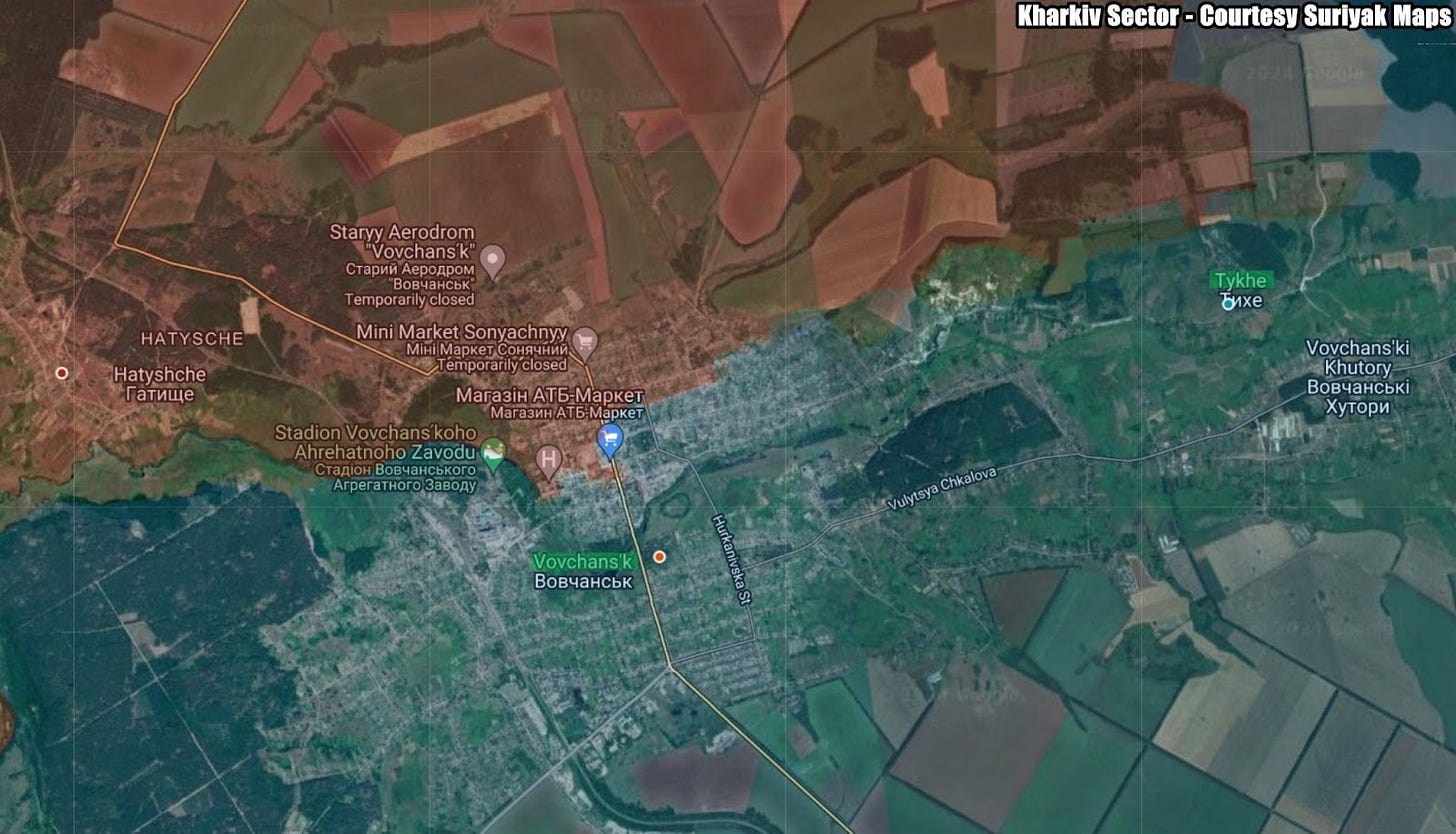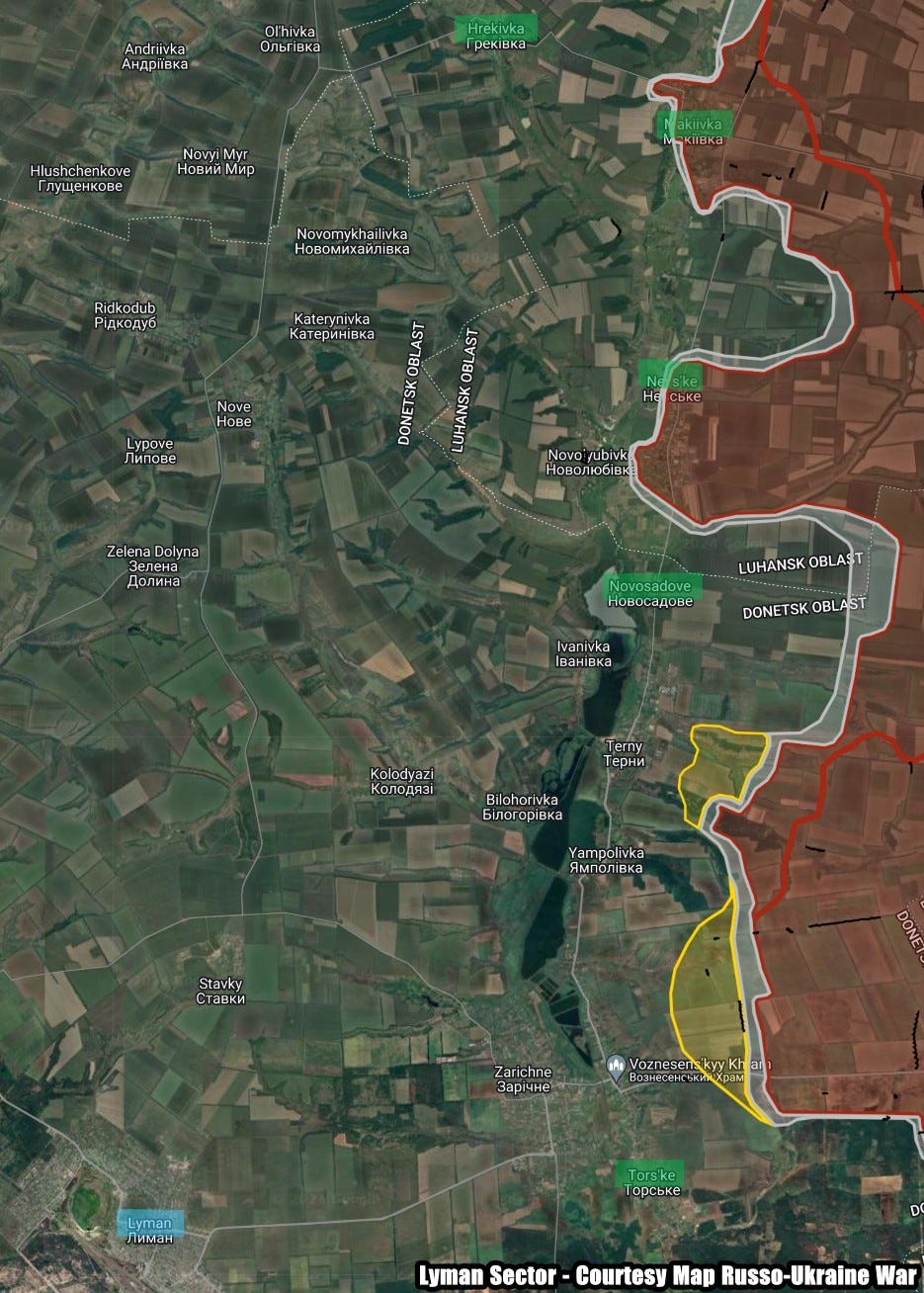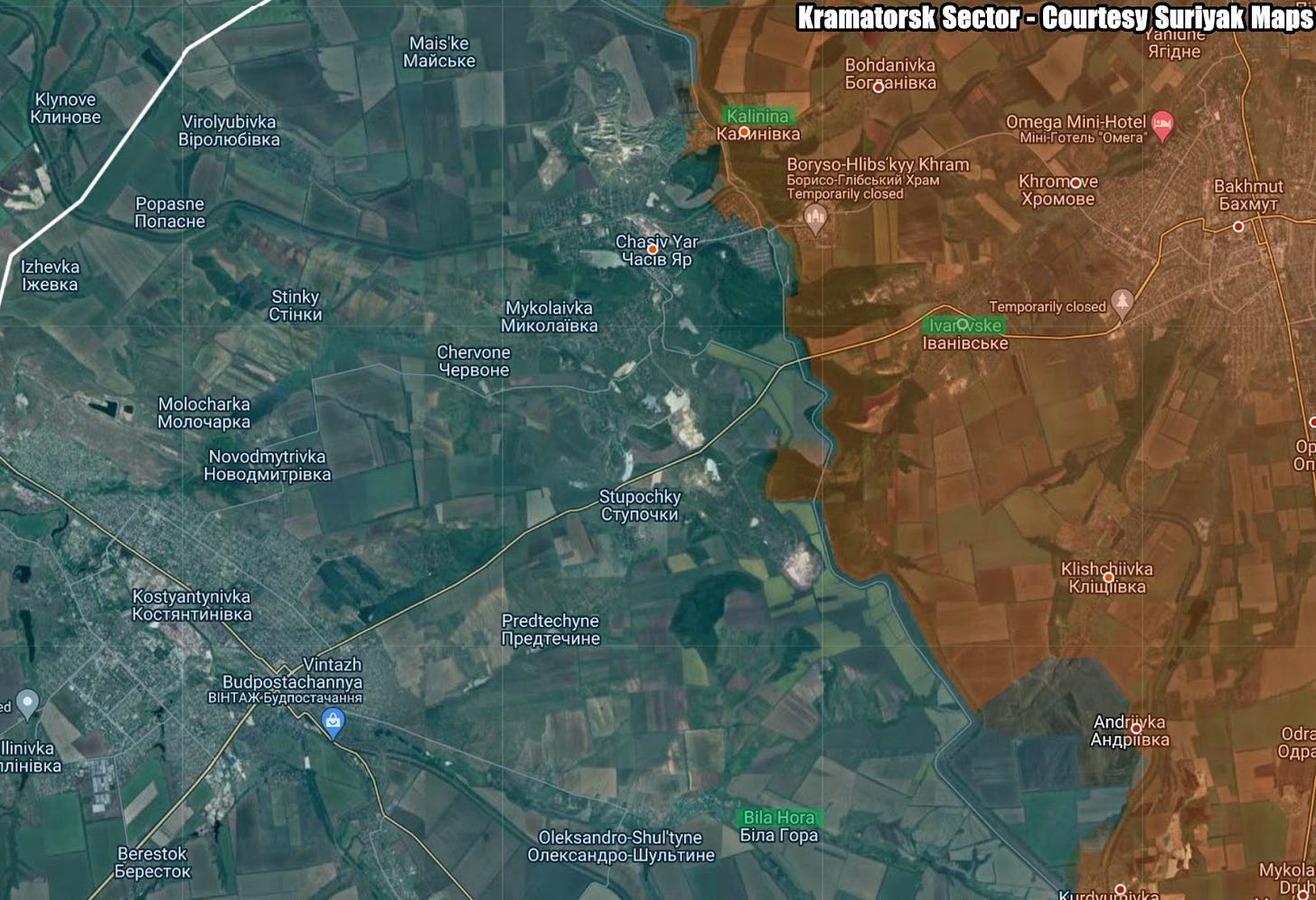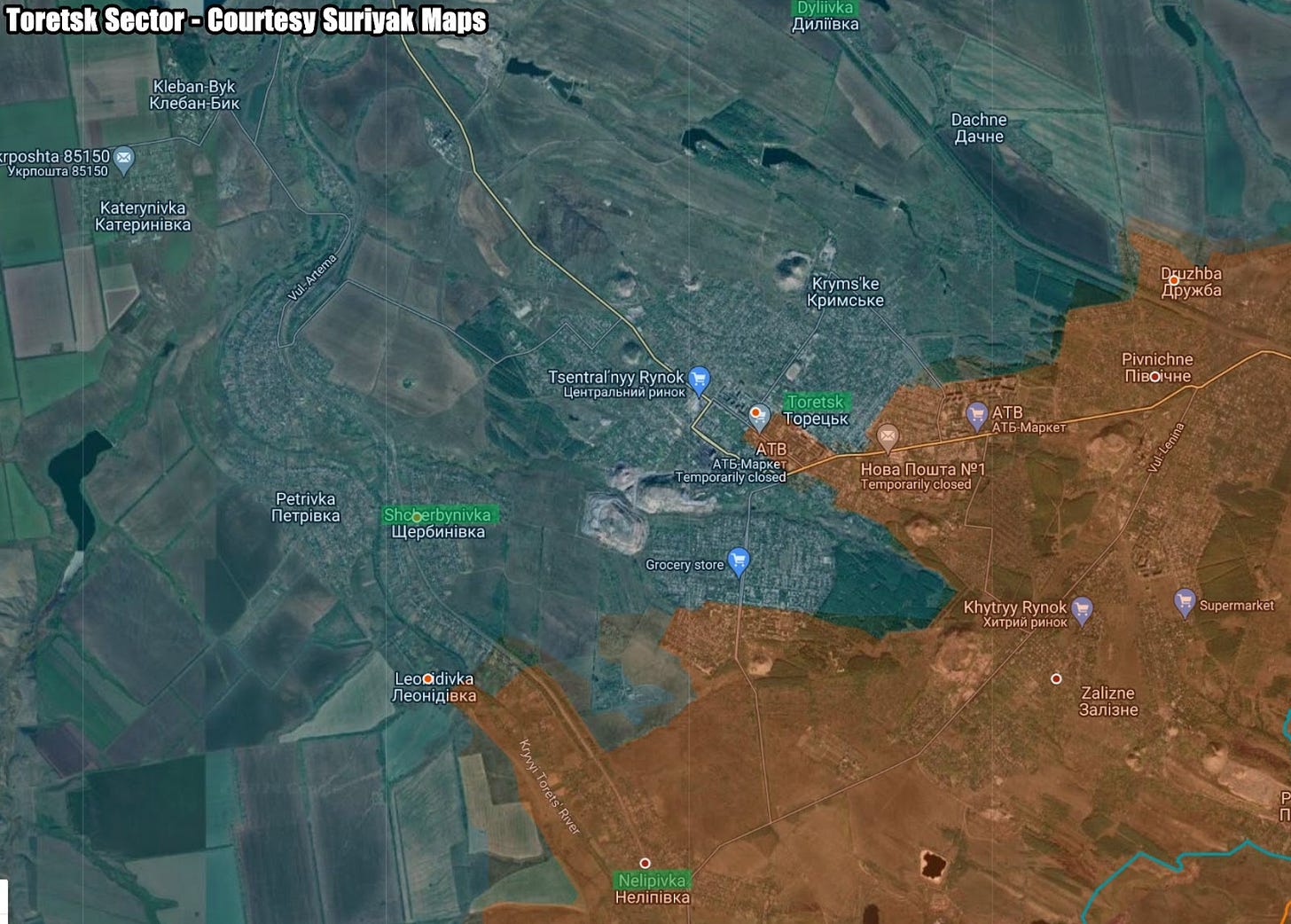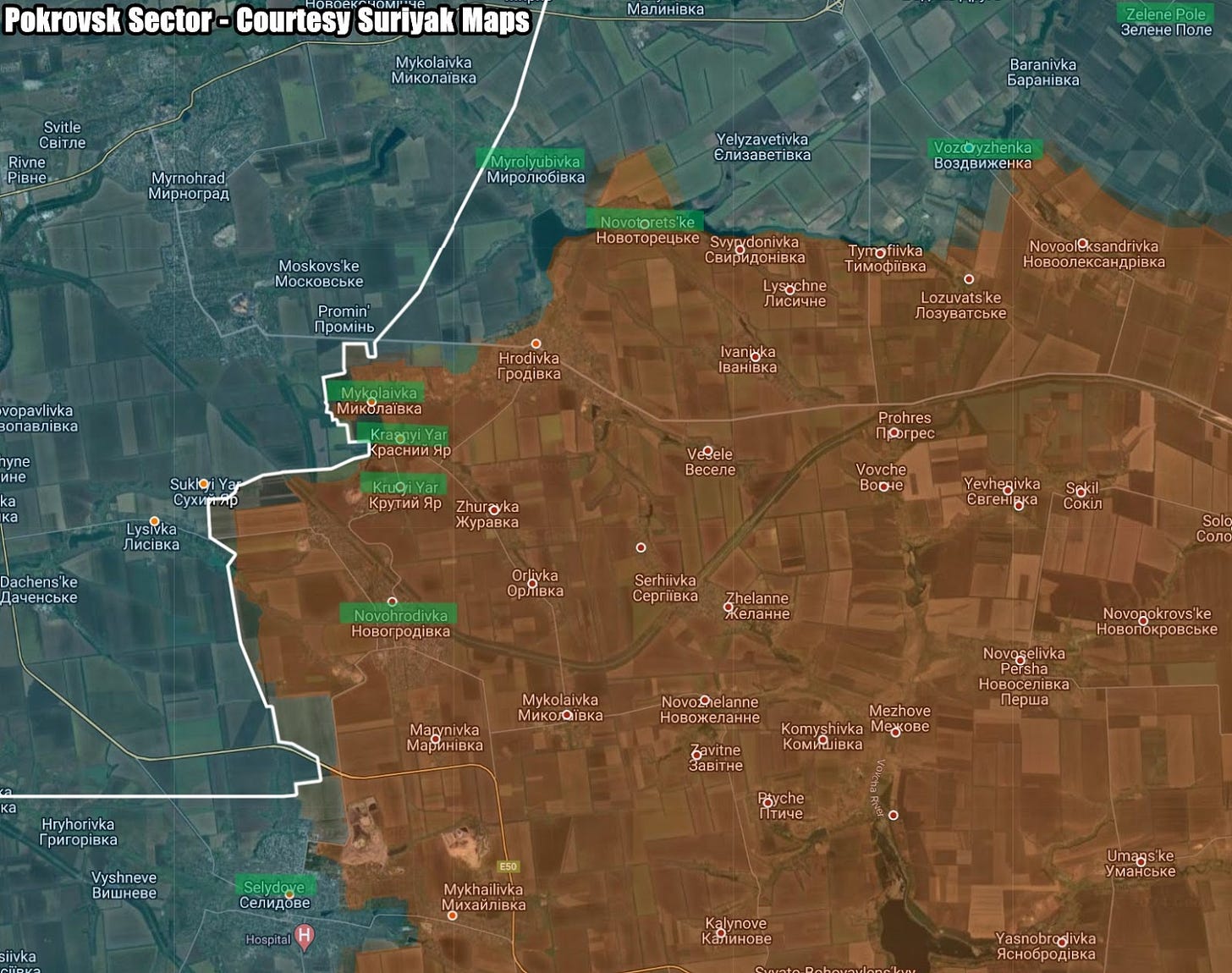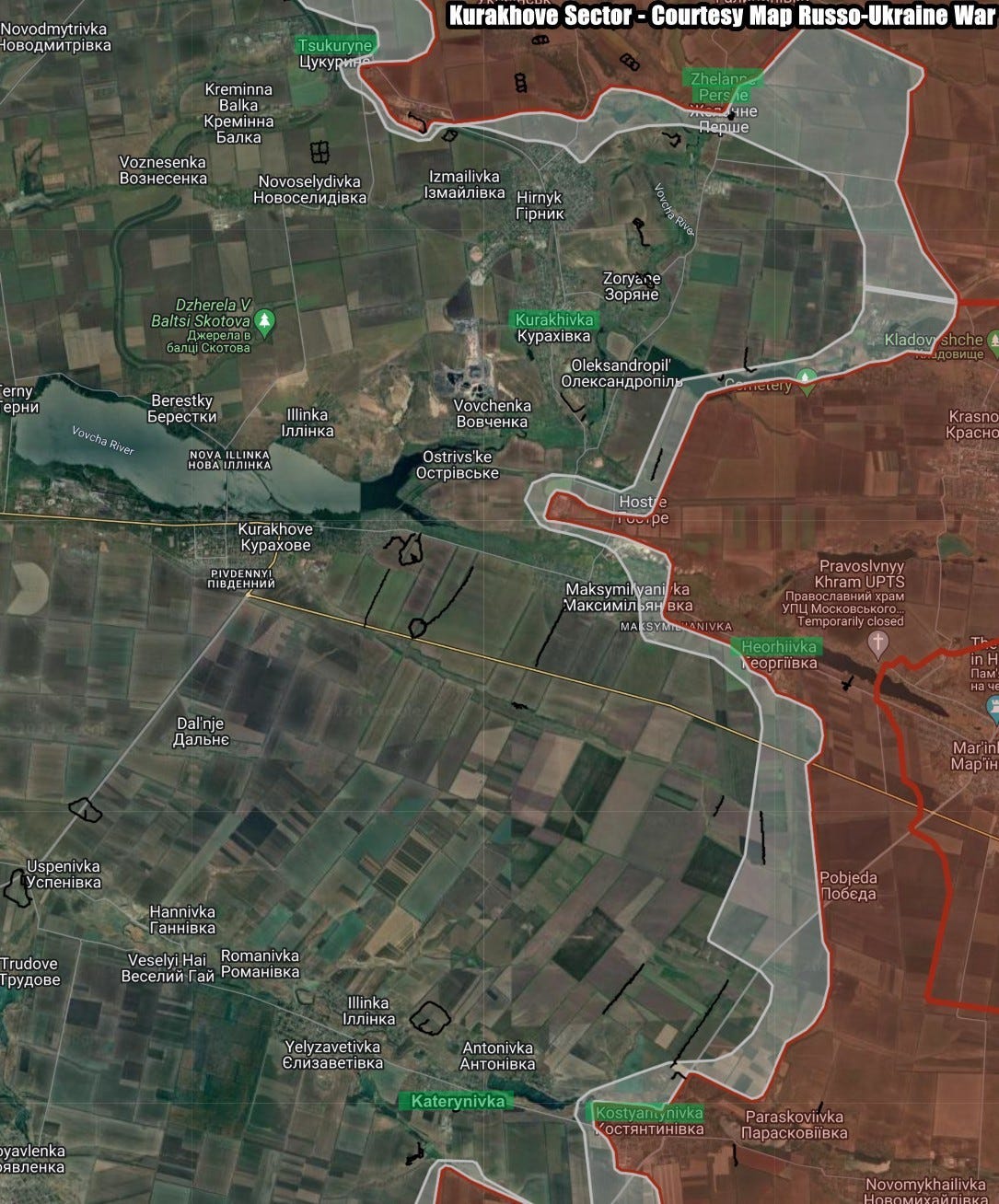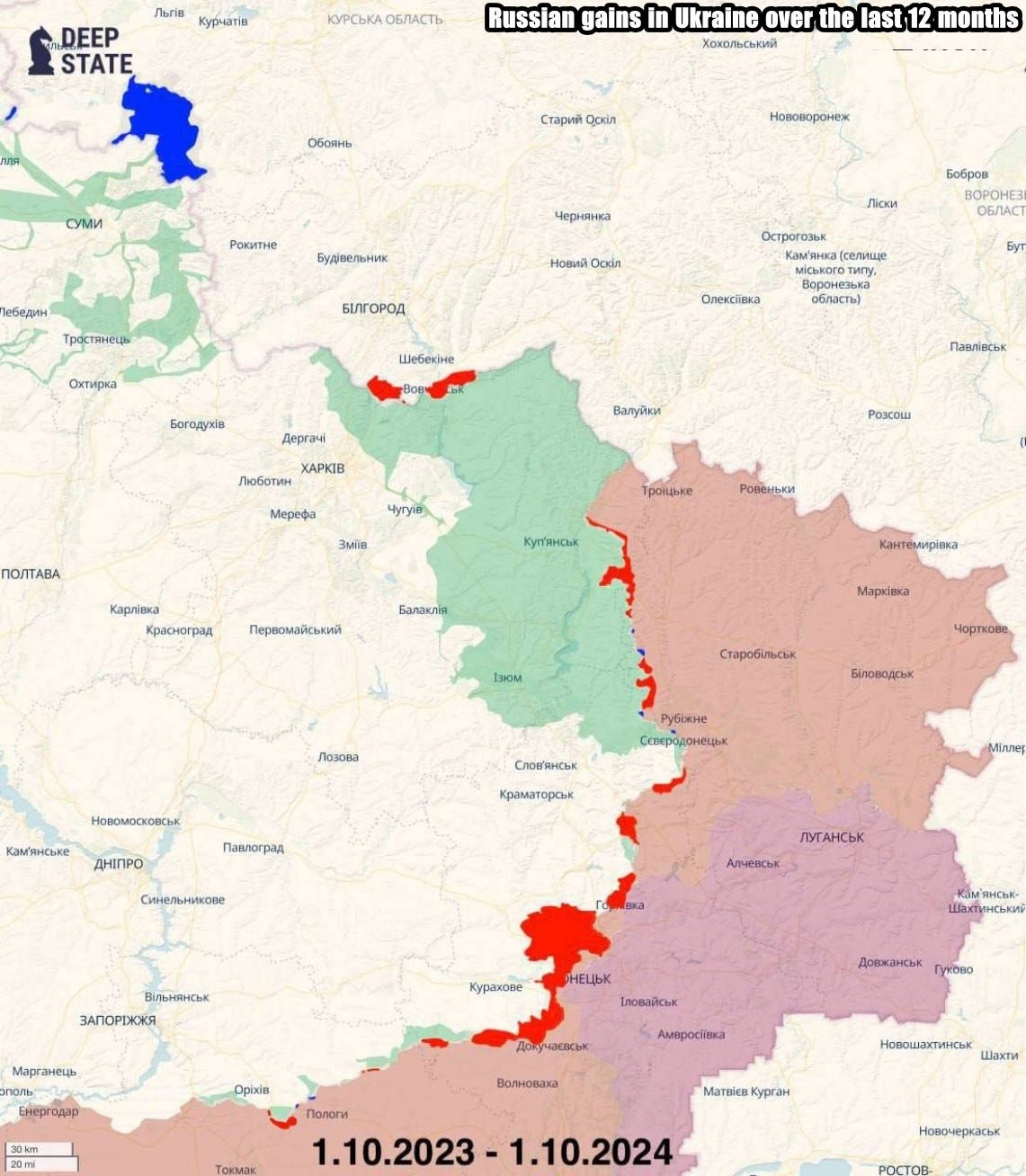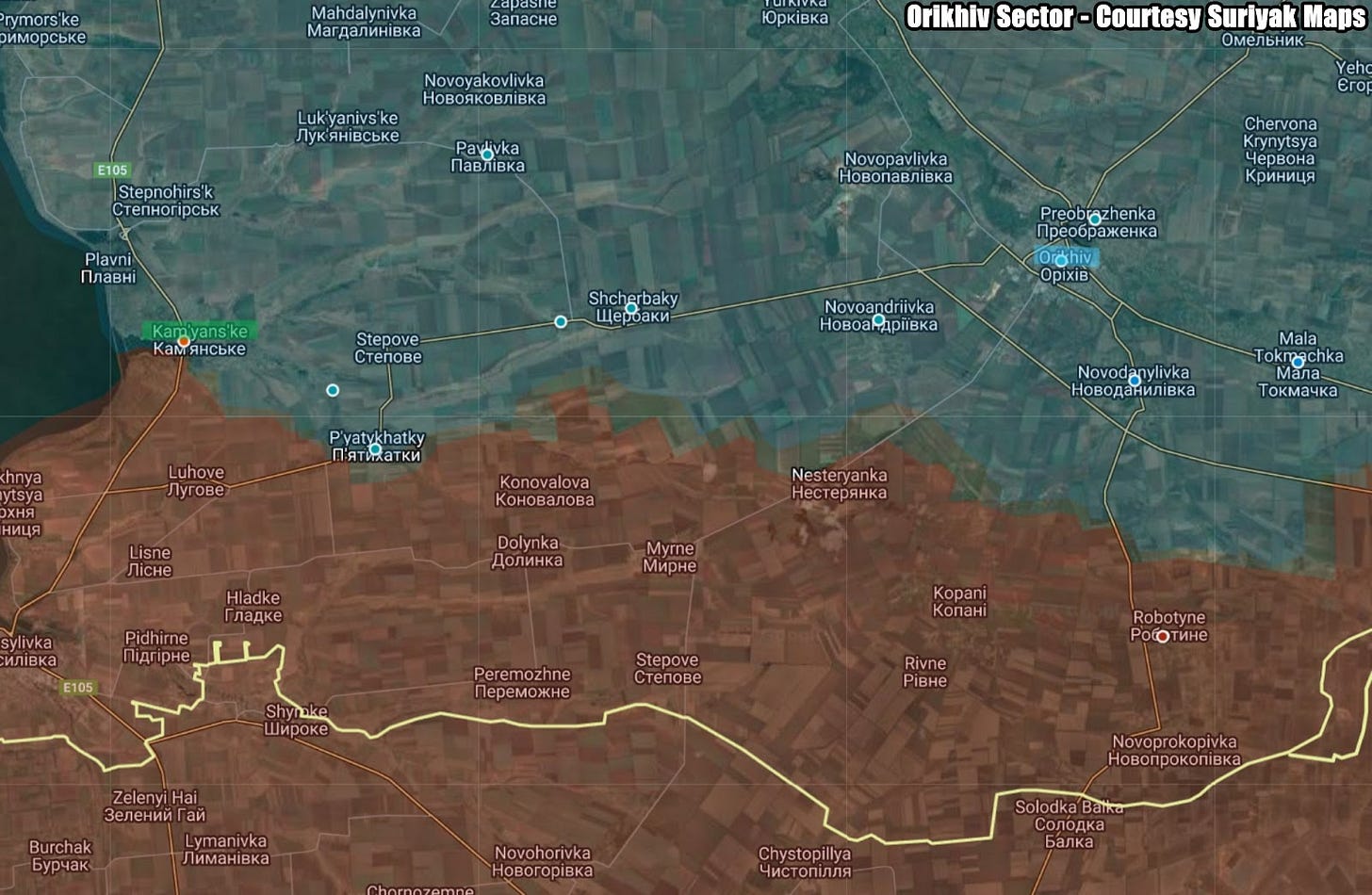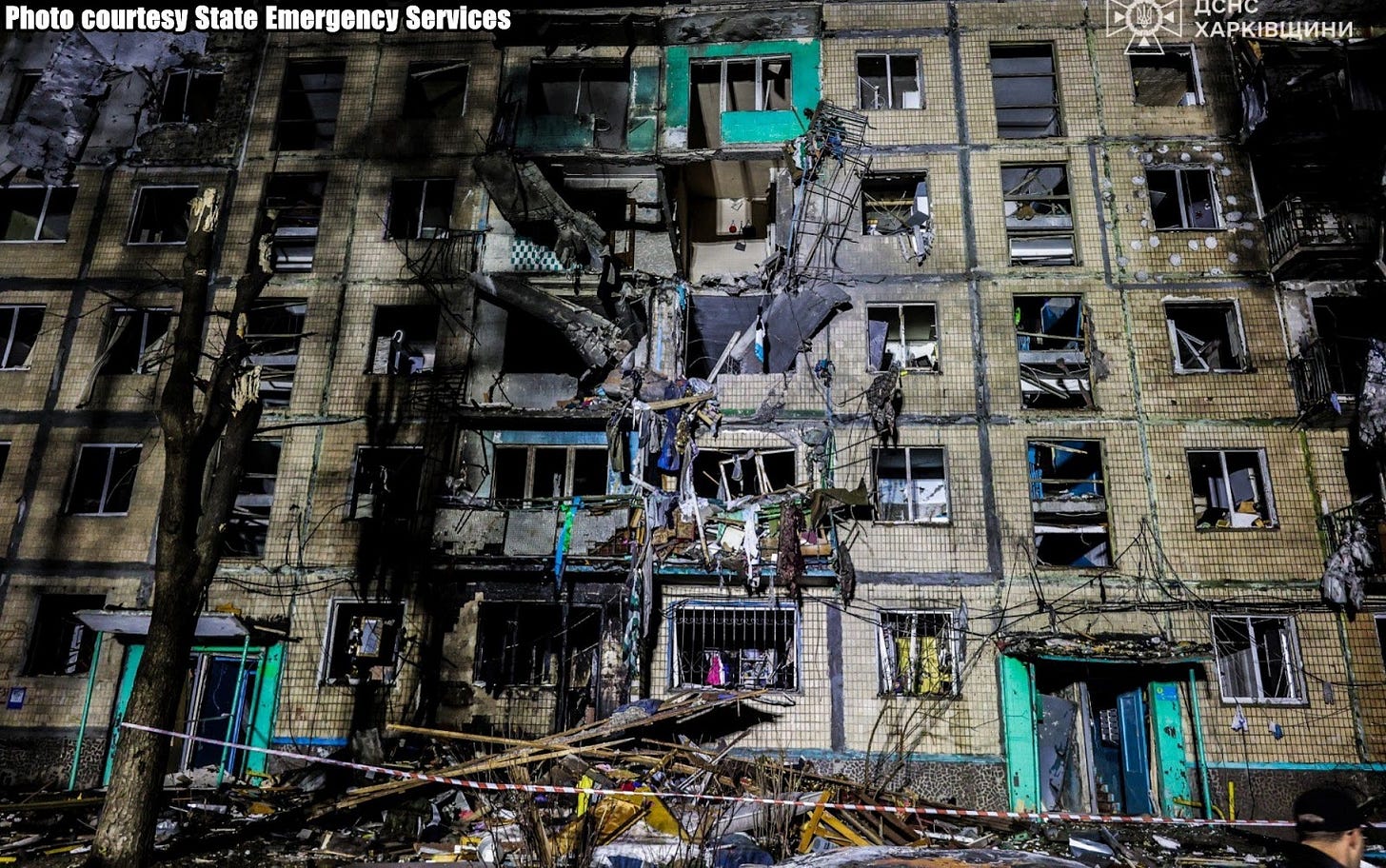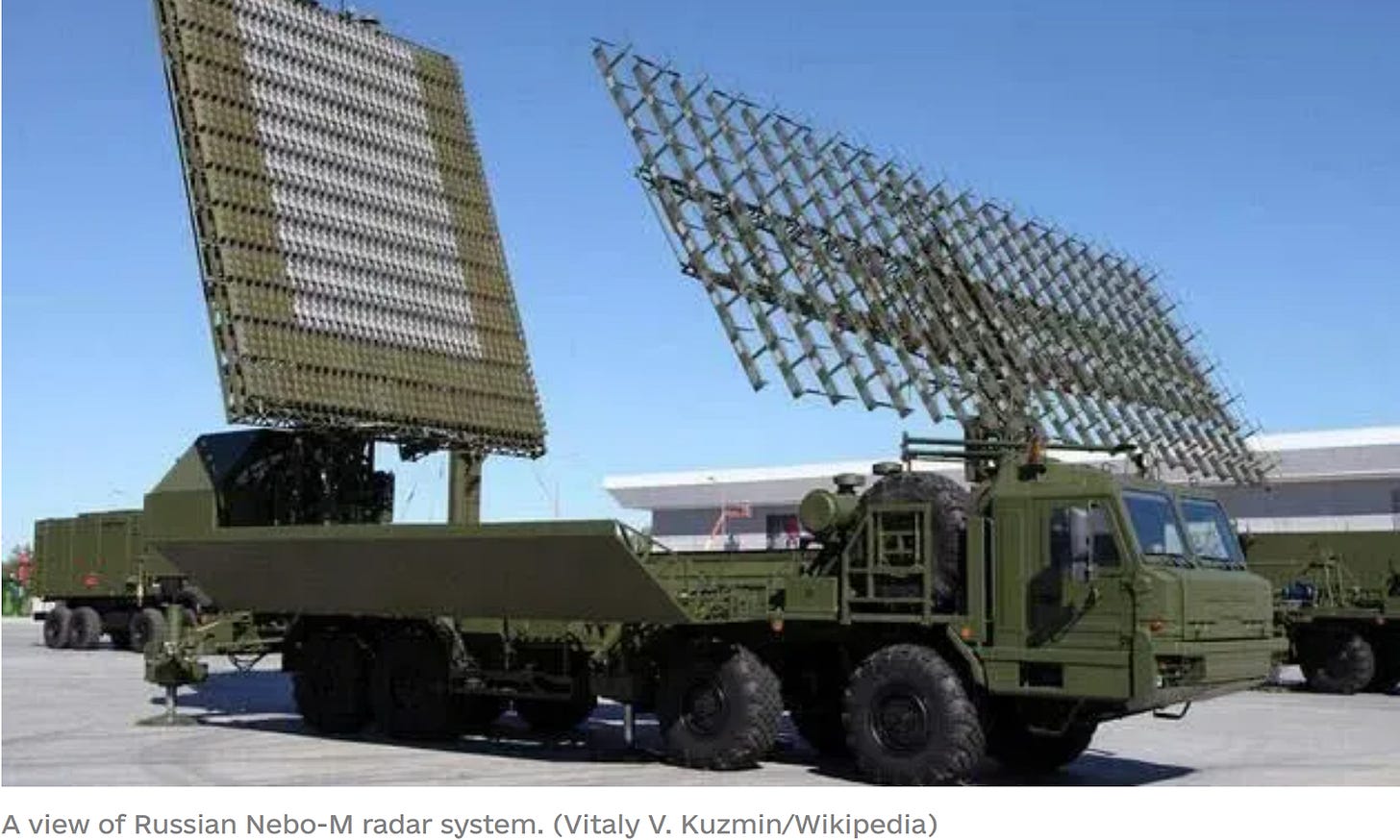Slava Ukraini! In early 2022 I began a Telegram channel aggregating news from a number of sources daily on the war in Ukraine. In June 2023 I began providing a daily draft for the Ukraine War Brief Podcast collecting news from over 70 sources daily, much of which formed the basis of the script. While the Podcast no longer exists I have continued to make this Brief available both on my own Substack and The People’s Media for those who wish to keep up with events on a daily basis.
All the latest news on the Russo-Ukraine War 6 days per week
ALONG THE CONTACT LINE
GSAFU Morning Report
The General Staff of the Armed Forces of Ukraine in its Operational Information update at 22:00 on Oct 2 stated that day 953 of the full-scale invasion of the Russian Federation against Ukraine was about to begin.
During the past day, 118 combat engagements took place. Over the past 24 hours, the enemy carried out 51 air strikes, 508 drone strikes and more than 3,335 artillery strikes across the positions of Ukrainian forces.
At the same time, Ukrainian soldiers continue to inflict losses in manpower and equipment on the occupying troops, exhausting the enemy along the entire front line and continue to disrupt the plans of Russian occupiers to advance deep into the territory of Ukraine.
Air Force Daily Report
On the night of October 3, 2024 (from 21.00 on 02.10 to 07.00 on 03.10), the enemy attacked the territory of Ukraine with attack UAVs. In total, the radio engineering troops of the Air Force detected and escorted 105 enemy unmanned aerial vehicles of the Shahed type (launching areas: Orel, Primorsko-Akhtarsk, Kursk - Russian Federation, Cape Chauda - Crimea).
The air attack was repulsed by aviation, anti-aircraft missile forces, electronic warfare units and mobile fire groups of the Air Force and the Defense Forces of Ukraine.
As a result of anti-aircraft combat, 78 enemy attack UAVs of the "Shahed" type were shot down in Kyiv, Cherkasy, Vinnytsia, Khmelnytskyi, Kirovohrad, Zhytomyr, Poltava, Chernihiv, Kherson, Odesa, Kharkiv, Sumy, Dnipropetrovsk, Rivne, and Ivano-Frankivsk regions.
One drone flew in the direction of Belarus, twenty-three enemy UAVs were lost in location in different regions of Ukraine, presumably as a result of active anti-aircraft defense. The information is being clarified.
The Russian Border Incursion
Ukrainian ground assaults continue in Kursk
The Institute for the Study of War (ISW), a US based think tank, in its Oct 2 Russian Offensive Campaign Assessment assessed that Ukrainian forces continued ground assaults in Glushkovsky Raion on Oct 2, but did not make any confirmed gains. A Russian milblogger claimed on Oct 1 that Ukrainian forces conducted a platoon-sized mechanized assault and temporarily reached the northern outskirts of Veseloye (south of Glushkovo) after bypassing Obukhovka (immediately south of Veseloye). The milblogger claimed that Russian forces destroyed a Ukrainian armored vehicle that reached Veseloye's outskirts and that Russian forces eventually repelled Ukrainian forces back to their initial positions. Russian sources, including the Russian Ministry of Defense (MoD), claimed that Russian forces repelled Ukrainian assaults in the direction of Veseloye and near Novy Put (south of Veseloye) and that fighting was ongoing near Obukhovka on Oct 2. The Russian MoD also claimed that Russian forces counterattacked near Novy Put.
Ukrainian forces continued ground attacks in the main Ukrainian salient in Kursk Oblast on October 2 but did not make any confirmed gains. Russian sources, including the Russian MoD, claimed that Russian forces repelled Ukrainian assaults east of Korenevo near Olgovka, north of Sudzha near Cherkasskoye Porechnoye, and southeast of Sudzha near Plekhovo.
The Khortytsia operational-strategic group
(Responsible for the northeastern part of Ukraine. )
Kharkiv Sector: Over the last day Ukrainian Defense Forces repelled 2 Russian attacks near Vovchansk and Tykhe.
Kupyansk Sector: Russian Forces carried out 14 offensive actions against Ukrainian defensive positions near Synkivka, Pishchane, Stelmahivka, Andiivka. 4 engagements continue.
Lyman Sector: Russian Forces carried out 14 offensive actions against Ukrainian defensive positions near Hrekivka, Makiivka, Nevske, Novosadove and Torske. 2 engagements continue.
Siversk Sector: There has been no significant change in the combat environment in the last 24 hours.
Kramatorsk Sector: Russian forces carried out 3 unsuccessful offensive actions near Kalinina, Ivanivske and Bila Hora.
Toretsk Sector: Russian forces carried out 20 offensive actions with air support near Dyliivka, Toretsk, Shcherbynivka and Nelipivka. 4 engagements continue.
The Tavria operational-strategic group
(Responsible for the central-eastern and southeastern part of Ukraine.)
Pokrovsk Sector : Russian forces conducted 29 unsuccessful attacks against Ukrainian defences in this area over the last day in the vicinity of Zelene Pole, Vozdvyzhenko, Novotoretske, Myrolyubivka, Mykolaivka, Krasnyi Yar, Kruti Yar, Novohrodivka, and Selydove.
Kurakhove Sector: The enemy, supported by aviation, made 17 assaults on Ukrainian positions near Tsukuryne, Zhelanne Pershe, Kurakhivka, Heorhiivka, Katerynivka and Konstantinivka. 6 engagements continue.
Vremivka Sector: Russian forces tried to 3 times to break through Ukrainian positions near Bohoyavlenka.
Ukrainian brigade says it minimised losses through strategic retreat from Vuhledar
The 72nd Mechanised Brigade of Ukraine withdrew from Donetsk’s Vuhledar, facing Russian flank pressure and logistical difficulties. Euromaidan reports.
The evacuation of Ukrainian military personnel, especially the wounded, from Vuhledar took place under the fire and pressure from the flanks, according to Arsenii Prylipka, press officer of the 72nd Separate Mechanized Brigade of the Armed Forces of Ukraine named after the Black Zaporozhians. The Brigade did not disclose the number of casualties or its new location.
“The wounded were evacuated, and the conditions were very difficult because the enemy was pressing from the flanks, which greatly complicated logistics. First and foremost, it was about evacuating our servicemen from Vuhledar and from positions to its right and left. But we did evacuate the wounded.”
The press officer acknowledged that there were casualties, but emphasized that by retreating to new defensive lines, they managed to minimize losses as much as possible. He explained that remaining in Vuhledar would have resulted in greater casualties.
Orikhiv Sector: Russian forces made 1 attempt to advance against Ukrainian positions near Kamyanske
The Odesa operational-strategic group
(Responsible for Kherson, Qırım, (also known as Crimea) and the Black Sea.)
Prydniprovsk Sector: There has been no significant change in the combat environment in the last 24 hours.
Russia’s Kh-22 Missile Failure in the Black Sea
The UK Ministry of Defence in their Oct 3 Intelligence Update on Ukraine stated that on September 11, 2024, the Aya merchant vessel (MV) was struck by a missile in the Black Sea as it transited south from Ukrainian port of Odesa having been loaded with more than 26 thousand tons of grain bound for Egypt. It is almost certain that the missile was an AS-4 KITCHEN [Kh-22] anti-ship missile launched by a Tu-22M3 BACKFIRE bomber that was operating in the area at the time. It is a realistic possibility that a detonation failure avoided catastrophic damage.
It is unlikely that the Aya MV was the intended target for this mission and was likely struck due to poor targeting procedures from russian pilots using aging munition. Russia has regularly attacked targets along Ukraine’s Black Sea coastline, including Snake Island, as they attempt to disrupt export activity and degrade any military assets in the area.
Following the loss of a BACKFIRE [Tu-22M3] in April this year, Russia has almost certainly been more wary with their strike operations in the Black Sea. It is a realistic possibility this incident occurred due to pilots incorrectly identifying the Aya MV as their target in haste, wanting to depart the area immediately after launch for fear of being targeted by Ukrainian surface to air missile.
The KITCHEN [Kh-22] missile has consistently underperformed in this war. Launching a supersonic cruise missile on an incorrect heading against a likely erroneous target in international waters demonstrates extremely poor and irresponsible aviation practice.
TEMPORARILY OCCUPIED TERRITORIES
Nothing major to report.
THE HOME FRONT
Russia launches major drone attack on Ukraine, damages energy infrastructure
Russian forces launched a major drone attack overnight on 15 Ukrainian regions, causing damage to energy infrastructure and residential buildings, authorities said on Thursday. Reuters reports.
The Ukrainian air force said it had shot down 78 out of 105 Russian drones during the assault, with 23 more likely impacted by active electronic jamming.
The drones damaged power lines and substations' equipment in the Kyiv, Odesa and Ivano-Frankivsk regions in the past 24 hours, Ukraine's energy ministry said on Telegram.
The attacks caused temporary disruption of railway services in the southern Odesa region as well as power cuts for households, it said.
Odesa regional governor Oleh Kiper said power had been restored to more than 3,000 consumers in his region following the overnight attack, though a further 2,000 people remained without power.
Authorities said they had downed around 15 drones over Kyiv and its surroundings during an air alert that lasted over five hours. The central Ukrainian regions of Poltava, Cherkasy and Kirovohrad all reported minor damage to property.
Russia's defence ministry said its forces had hit Ukrainian energy facilities that were providing power to Ukraine's armed forces' operations, Russian state news agency TASS reported.
Moscow denies targeting civilians but has regularly struck towns and cities behind the front lines. A Russian guided bomb struck an apartment block in the eastern city of Kharkiv on Wednesday, starting fires and injuring at least 10 people.
More than 2-1/2 years into its full-scale invasion of Ukraine, Russia has been pummelling the country's energy infrastructure with drone and missile attacks while its forces continue to make steady progress on the eastern front.
The strikes, which have intensified with the approach of winter, have prompted Kyiv to repeatedly call on its allies to lift restrictions on its use of Western long-range weapons to strike deep into Russia to curb its ability to launch attacks.
The Ukrainian military said on Thursday it had used ATACMS ballistic missiles provided by the U.S. to strike a Russian radar station to reduce Moscow's ability to "detect, track and intercept" ballistic targets. It did not say when the strike took place or give the venue of the 'Nebo-M' radar station.
Ukraine takes first step towards gunpowder production
A single artillery round takes several kilograms of gunpowder to propel the projectile out of the barrel and provide it with the necessary velocity. The wars in Ukraine and the Middle East have caused the demand for ammunition to skyrocket and made propelling charges scarce on the market. Ukrainska Pravda reports.
Military-grade gunpowder is a highly complex product to manufacture, so it remains a critical bottleneck in the production of shells for both Russia and Ukraine, as well as their respective allies. Prior to the full-scale Russian invasion, Kyiv had not established mass production of munitions and gunpowder, so it now has to work to compensate for this lost capacity.
Gunpowder production starts with the cultivation of raw materials, such as wood and industrial hemp, but most commonly, Gossypium, the plant used to produce cotton. Ukraine last grew this crop in the mid-20th century, meaning that the entire process must now be relearned from the ground up.
The Ukrainian government has begun an experimental cotton cultivation project in Odesa Oblast, bringing in several foreign species of plant used to produce cotton. It will soon become clear whether Ukrainian farmers can support the defence industry and whether Ukrainian factories can at least partially overcome the raw material shortage and ramp up ammunition production.
Western countries are chronically lagging behind production targets as companies face a shortage of explosives, primarily gunpowder. New production lines are being rolled out worldwide at gunpowder plants, though a shortage still persists.
The race to produce ammunition is less about building more factories and more about securing the supply of scarce components.
If Ukraine had stable access to gunpowder and relevant state contracts, the number of shells produced would increase by hundreds of thousands annually, Vladyslav Belbas, Director of Ukrainian Armor, a company that produces artillery and mortar ammunition.
He noted that the powders for NATO- and Soviet-calibre ammunition differ in both technology and properties. Most Ukrainian contracts require Soviet-quality gunpowder, which can only be sourced from countries in the former socialist camp and some states friendly to Russia through intermediaries.
Plants are already operating at full capacity but are unable to supply gunpowder for purchase, as European munitions manufacturers have secured all available quotas until 2026.
The issue lies not only in the shortage of gunpowder but also in monopolisation of the market. Many Western gunpowder plants are affiliated with companies that produce their own shells, prioritising the supply of this scarce component for their own operations.
The production of components and raw materials for ammunition will remain an open niche in the global market for a long time. And it's not just the demand for shells but also the dependence on Chinese nitrocellulose.
If Ukraine wants to develop a robust and self-sufficient defence industry, access to critical components and raw materials will be one of the primary challenges it must address.
RUSSIAN WORLD
Ukrainian drones strike Russian airfield in Voronezh Oblast
Drones operated by the Security Service of Ukraine (SBU) attacked the Borisoglebsk military airfield in Russia's Voronezh Oblast overnight on Oct. 3 the Kyiv Independent reported citing a source in the SBU.
The attack was reportedly carried out together with Ukraine's Special Operations Forces.
The Russian Defense Ministry claimed its air defense destroyed 113 Ukrainian drones overnight, with 25 of them downed over Voronezh Oblast.
According to the source, Russian warehouses containing guided aerial bombs, hangars with Su-35 and Su-34 aircraft, and aviation fuel storage facilities were targeted.
"The SBU continues to take active measures to reduce the enemy's ability to terrorize peaceful Ukrainian cities with fighter jets equipped with KABs," the source said.
Guided aerial bombs known as KABs are precision-guided munitions that have a shorter range than missiles, but are far cheaper to produce. The weapons are launched from aircraft within Russian territory, outside the range of Ukrainian air defense.
Russia used almost 900 guided bombs against Ukraine over the past week, President Volodymyr Zelensky said on Sept. 29.
Ukrainian forces have previously targeted military airfields, oil refineries, and ammunition depots in Voronezh Oblast.
Russia places four journalists on trial for 'extremism'
Russia on Wednesday opened the trial of four independent journalists who prosecutors say assisted the banned organisations of late opposition leader Alexei Navalny. DW reports.
The behind-closed-doors trial comes seven months after Navalny, Russian President Vladimir Putin's main opponent, died in an Arctic prison in circumstances that have not been fully explained.
Journalists Konstantin Gabov, Sergei Karelin, Antonina Favorskaya and Artem Kriger could be sentenced to as much as six years in prison. They are charged with involvement in "an extremist group."
The four, mostly video reporters detained since being arrested in March and April, appeared in court inside a glass cage for defendants. As they were led into the courtroom, supporters greeted the four with applause.
After about 30 minutes of open proceedings in court, Judge Natalia Borisenkova ordered that the trial be held away from the public gaze, a practice now increasingly common in Russia.
The prosecution's request to evict press and spectators for the remainder of the trial was based on a letter from the counter-extremism department of the Interior Ministry arguing that Navalny supporters were preparing "provocations."
The independent news outlet Mediazona quoted Kriger protesting as journalists were asked to leave. "This is just some kind of archaism," it quoted him as saying. "This is how they do it in totalitarian regimes."
Addressing reporters from behind the glass, Kriger cast the case against the four as a cautionary tale. He urged journalists still in Russia to leave the country: "It is not a joke, any person can be charged with anything."
NEWS WORLDWIDE
New NATO Secretary General Rutte arrives in Kyiv on unannounced visit
Newly appointed NATO Secretary General Mark Rutte arrived in Kyiv on Oct. 3 for a surprise visit. Rutte's visit came days after he took the helm as the alliance's new secretary general. As a Dutch prime minister, he remained one of the staunchest of Kyiv's allies, taking the lead with initiatives like providing F-16 planes to Ukraine. The Kyiv Independent reports.
The NATO secretary general said on Oct. 1 that Ukraine would remain one of his top priorities amid Russia's ongoing war. Speaking at a press conference with President Volodymyr Zelenskyy in Kyiv, Rutte reiterated that Ukraine's path towards NATO is "irreversible."
"Now we are focused on getting Ukraine invited to join the alliance. This is a very important step. It is difficult to achieve. We are focused on this result. We will do everything to get it," Zelenskyy said.
Earlier, Zelenskyy, who has repeatedly called on partners to issue a membership invitation to Kyiv, Ukraine will join NATO only after Russia's full-scale war ends. The invitation to join NATO is part of Ukraine's victory plan that was presented to U.S. President Joe Biden in late September.
The July NATO summit in Washington ended with the launch of the Ukraine Compact, a security framework signed by 32 allies.
The countries affirmed Kyiv's "irreversible" path toward membership, though Ukraine did not receive any definitive news about its future accession.
MILITARY & TECH
Ukraine hits Russian long-range radar system with US-supplied ATACMS
Ukrainian forces struck a Russian Nebo-M radar system using U.S.-supplied ATACMS missiles, Ukraine's General Staff reported on Oct. 3. The Kyiv Independent reports.
The Nebo-M, valued at about $100 million, is designed to detect and intercept aerial threats, including ballistic missiles.
Ukraine's military said the radar's destruction would open an "air corridor" for more effective use of Storm Shadow and Scalp-EG cruise missiles. Russia is believed to have only 10 operational Nebo-M systems remaining, though the Kyiv Independent could not verify this claim.
Earlier this year, Ukraine's Security Service (SBU) targeted a modernized Nebo-U radar system in Russia's Bryansk Oblast, according to an SBU source.
That’s it for today’s Draft folks if you would like to keep up with events in Ukraine daily please consider subscribing, its free!
Feel free to share this update with your friends. Heroyam Slava!







